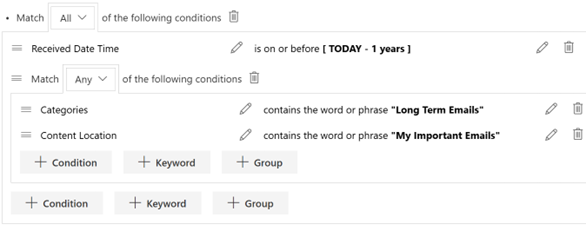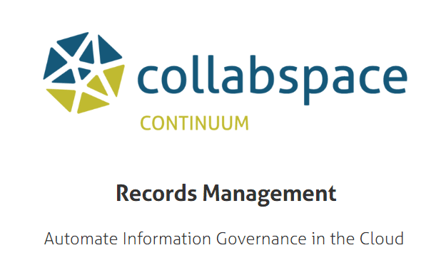Almost all business processes involve user-driven reviews. Content must be reviewed, metadata must be reviewed, maybe something needs to be updated, a customer needs to be contacted, and dozens of other things. That is why I’m very happy to share with you the Review Workflow Action in Collabware CLM 2016.
The Review Action can be added to any Workflow, and it is designed to be an automated review process, directed at a specific user group.
Let’s jump right into the setup of a Review Action, so we can discuss how it can be configured. All Review Actions require three things: Users, Threshold, and Outcomes.
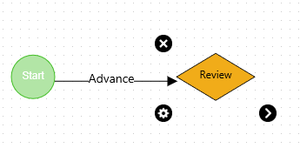
We have made assigning users to a Review quite flexible. You can select a special user type including the user who created or last modified the document; or perhaps the special Reviewer Access Control Level since they are assigned on the Record Category or Aggregate. If you need to be more general, you can select a static Access Control Level or simply specify users manually. Essentially, no matter what kind of review you are trying to create, you will always be able to define the users who are responsible for it.
Next, we have the threshold. This is a new concept in Collabware CLM, designed to make the building and starting of a Review more automatic. When an item reaches a Review Action, that Review will not get created automatically; instead, the item will be placed in a queue, while it waits for other items to reach the Review Action. This ensures that your users aren’t being bogged down with repetitive reviews on single items. The system will wait, holding these review items in a queue, until the threshold is reached. Once the threshold is reached, the review will start and an email will be sent to the review users, prompting them to complete the review.
We have two threshold types and you can use one or both. The first threshold type is number of items on the Review. This is a simple number count; if you want to have big reviews, you could set it to 100 items; if you want to have small reviews, you could set it to 5 items. Now, if you set it to 100 items, what happens if 100 items never come up for review? Then the system will rely on the second threshold type, the time-based threshold. You can specify a calendar-based review that occurs every week, month, quarter, or year. If that doesn’t fit your needs, then you can simply tell the system to start the review list a certain number of days after the first item comes up for review. Regardless of how many items are ready for review, if you have a time-based threshold, it will start the list.
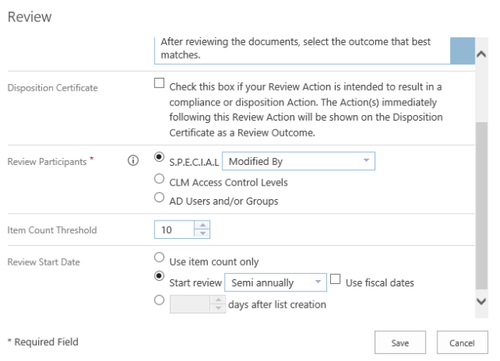
The last thing that requires configuration is the outcome of the Review. These are easily defined by drawing different “event lines” from the Review Action to the desired outcome. In the example below, you can see that we have four potential outcomes for this Review: Repeat the Review in 3 months; Destroy the Document; Mark the Document as Official; or do nothing to the document.

All of these outcomes will be available to the users completing the review, and they can assign any number of items to any specific outcome. Once a user assigns all review items to an outcome, the Review can be completed and the selected outcomes will be triggered.
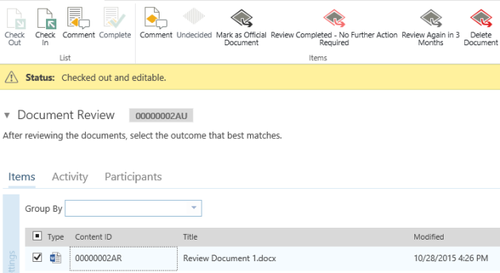
This is a very flexible and powerful tool, and any number of Reviews can be created. There are more aspects to the Review Workflow that have not been discussed yet, and I will save them for a future blog. These topics include creating effective Content Rules to automatically capture items to a Review Workflow, and how users go about completing a Review. I hope you look forward to those blogs and other ones demonstrating the powerful new features of the next version of Collabware CLM 2016.
If you would like to learn more about Collabware CLM, access our Collabware CLM here.



